This is a school question (I know some hate this), but I tried and really couldn't think of an answer. I suspect this circuit will do some simple instruction.
So if you had an input like 1101 (representing x blocks) and 0001 (representing y blocks), the first operation will be XOR either or logic.
1101
0001
1100
then you have negation or for all digits. So...
neg(1 or 1 or 0 or 0)
So inside negation is always true, hence 1. (1 or True or vs anything is true)
so neg(1) = 0.
Circuit logic aka neg((x1 XOR y1) OR (x2 XOR y2) OR (x3 XOR y3) OR (x4 XOR y4))
But I was asked what this bonus question significant? As I said, I suspected maybe this is how some basic operation work in assembly (4 blocks gave that way), but it's not basic operation. It's not bit-masking... so this is where I got confused. Shouldn't be hard since it's first bonus question asked in 2nd year course, but it's not clicking to me somehow :( Time to change majors lol welp.
Any ideas?
